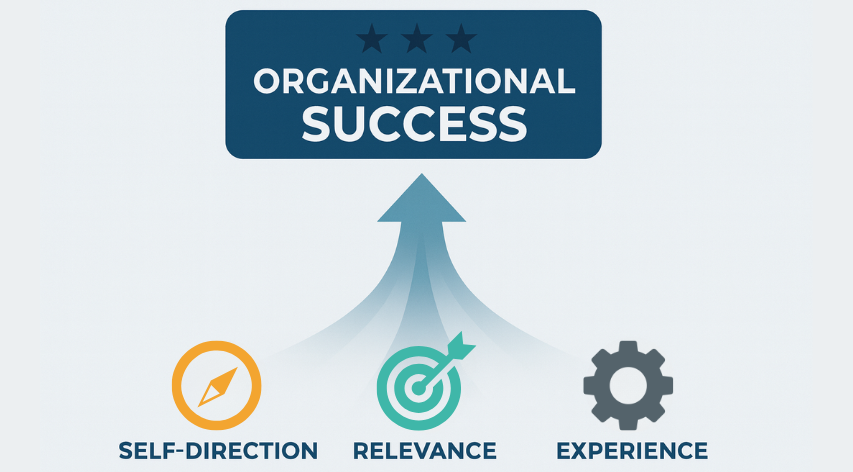Hazard Identification at the Worksite: Considering Current Workforce Demographics
Within the Safety Professional community, one topic guaranteed to generate vigorous debate is that of Hazard Identification. Volumes of information exist, theories are plentiful and opinions are abundant. While certain fundamentals always will apply, consideration for the changing dynamic of today’s workforce is essential. Once we understand that dynamic, our approach to hazard identification (and consequently, risk assessment) may need to change as well.
The aging of the general population, directly impacts the current industrial workforce. Recent surveys show that approximately 70% of the workforce has 10 years or less experience in their craft. Combine that with the fact that over 50% of the workforce is under the age of 40 and you can begin to see that a gap exists which is affecting Safety performance at the workplace. Unfortunately, that ‘safety performance gap’ is supported by current statistics which show an increase in worksite incident rates. One of the most alarming among those stats is that 60% of incidents have poor decision-making as a root cause. In addition to that, 45% of incidents show risk-taking as a root cause. Given these statistics, it becomes readily apparent that current Hazard Identification and Risk-Assessment processes may need scrutiny.
While Safety Professionals provide us with a multitude of tools to identify hazards and assess risk, have we truly considered the ‘end-user’ (the worker) in terms of application of those tools? A worker can have access to the best risk matrix, the best JHA/JSA, the best PRA (Personal Risk Assessment) card provided, but if they make the wrong personal decision, it’s all for naught. I suggest we consider what constitutes making the ‘wrong’ decision. Personal decisions can be based on many factors, but psychologists will generally agree that the three most common are knowledge, experience and attitude. Knowledge would be the individual’s qualifications, in this case, we’d liken that to formal craft training, (i.e., an electrician’s having been trained as an apprentice, a journeyman, etc.). Experience is somewhat self-explanatory in this case; simply put, how long an individual has been practicing their craft and how proficient they’ve become in that craft. Attitude is an emotional factor and is controlled by no other person except that individual. Of the three, attitude is the most variable and there-in lies our challenge. When we discuss hazard and risk, we must consider the individual’s perception of said hazard and associated risk. Perception is a process that adds meaning to information we receive via our senses. It is highly subjective and depends greatly on our life experiences and individual knowledge. Consequently, when it comes to Risk Perception, one person’s ‘risk’ may be another’s status quo.
“Don’t worry, you’ll be fine”
Years ago, when I began my career with a major oil company, I found myself receiving operator training in the compressor building of a gas processing plant. Being a low-seniority new hire, it fell to me to pull relief as the ‘morning tour’ compressor operator. My training consisted of spending a day with the senior compressor operator as he made his rounds in the compressor building. The compressors were a 3-stage, gas-burning, reciprocal type and my duty was to monitor their operating parameters and shut-in and isolate should the need arise. At the end of the day’s training, he mumbled that “they run good most of the time…don’t worry, you’ll be fine”. I was expected to return to work that night. To say I was ‘perceiving risk’ at that point would be an understatement. His idea of “you’ll be fine” was not comforting given my circumstances. All I knew was that I’d be alone late at night, in a building with 12 compressors which were the size of a semi-truck, each generating 900 lbs of discharge pressure at a temperature of 325 degrees in an environment which was hot, dark and incredibly loud (120 DBA of SPL). For me, it was terrifying. For him, it was just another day on the job. While we would hope that sort of scenario would not occur in today’s workplace, you can appreciate what younger workers might encounter as they enter the workforce.
As Safety Leaders, it is our obligation to ensure that the current workforce is given proper training in hazard identification before they enter the worksite. The training must be applicable to their job function, tangible in concept, and delivered in a format to which they can relate. To discuss the mathematical variables of a complex risk matrix with a group of entry-level pipe-fitters would be an exercise in futility. To deliver that same information in a ‘language’ they can understand, would be quite beneficial.
The Porcupine Analogy
As a Safety Professional, I will be the first to admit that we can sometimes ‘confound the wise with the simple’. As a communicator, I also realize that speaking a common language is essential to the transfer of information. Case in point would be explaining the difference between ‘Risk’ and ‘Hazard’. A universal definition of a hazard, is that it is a condition or set of circumstances that has the potential for causing harm to people, property or the environment. Risk is defined as the exposure to a given hazard. The level of risk is determined by the severity of consequences and the probability of the incident occurring. Given those parameters, let’s use an analogy that is easily understood – a porcupine. Most people would agree that getting too close to a porcupine, may result in a bad day for the individual that interacted with that particular porcupine. While humorous, that mental picture captures the essence of ‘Hazard’ and ‘Risk’. The porcupine is obviously hazardous (contains the potential for harm). The level of risk is determined by how the individual chose (or decided) to interact with the porcupine. More interaction with the porcupine (the hazard) equates to a higher level of risk (the possibility of getting hurt). Key to this analogy, is the decision by the individual to either interact with the porcupine or to not interact.
Given the current figures showing that unsafe acts cause 4 times more incidents than unsafe conditions, it is readily apparent that workers are making the wrong decision when encountering hazards in the workplace. Our challenge, as Safety Leaders, is to ensure we provide the influx of new workers to the industry with hazard and risk training that is applicable, tangible and comprehensible. If we fail to properly equip these workers with the best Safety tools possible, we will only continue to see incident rates escalate.
Scott McLaurin is the manager of Becht Safety Solutions. He has 37 years of experience in the Oil and Gas industry (32 of those years with a major Oil and Gas company). Having served in both operational and managerial roles has given him a unique perspective in terms of Safety and Leadership. For information about the available workshops offered by Becht Engineering, please contact Scott McLaurin at (936) 445-8459 or







